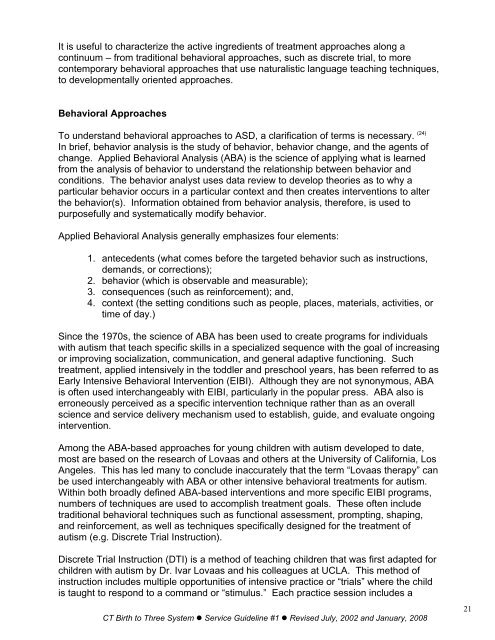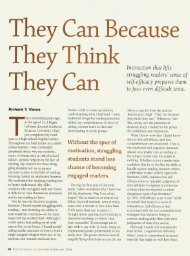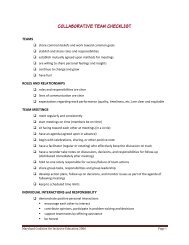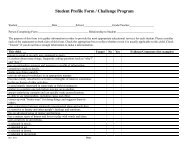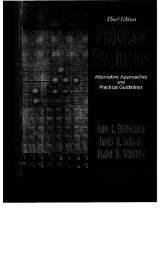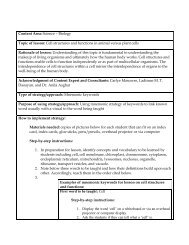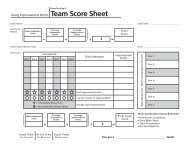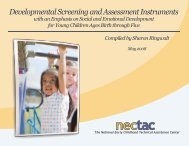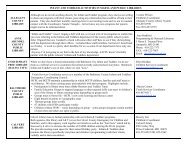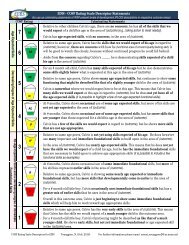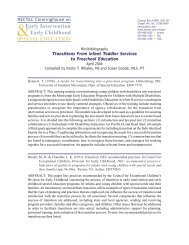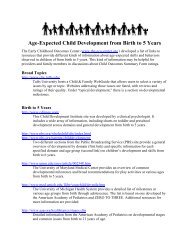The Autism Spectrum Disorder Service Guideline.pdf - CTE - Online ...
The Autism Spectrum Disorder Service Guideline.pdf - CTE - Online ...
The Autism Spectrum Disorder Service Guideline.pdf - CTE - Online ...
Create successful ePaper yourself
Turn your PDF publications into a flip-book with our unique Google optimized e-Paper software.
It is useful to characterize the active ingredients of treatment approaches along acontinuum – from traditional behavioral approaches, such as discrete trial, to morecontemporary behavioral approaches that use naturalistic language teaching techniques,to developmentally oriented approaches.Behavioral ApproachesTo understand behavioral approaches to ASD, a clarification of terms is necessary. (24)In brief, behavior analysis is the study of behavior, behavior change, and the agents ofchange. Applied Behavioral Analysis (ABA) is the science of applying what is learnedfrom the analysis of behavior to understand the relationship between behavior andconditions. <strong>The</strong> behavior analyst uses data review to develop theories as to why aparticular behavior occurs in a particular context and then creates interventions to alterthe behavior(s). Information obtained from behavior analysis, therefore, is used topurposefully and systematically modify behavior.Applied Behavioral Analysis generally emphasizes four elements:1. antecedents (what comes before the targeted behavior such as instructions,demands, or corrections);2. behavior (which is observable and measurable);3. consequences (such as reinforcement); and,4. context (the setting conditions such as people, places, materials, activities, ortime of day.)Since the 1970s, the science of ABA has been used to create programs for individualswith autism that teach specific skills in a specialized sequence with the goal of increasingor improving socialization, communication, and general adaptive functioning. Suchtreatment, applied intensively in the toddler and preschool years, has been referred to asEarly Intensive Behavioral Intervention (EIBI). Although they are not synonymous, ABAis often used interchangeably with EIBI, particularly in the popular press. ABA also iserroneously perceived as a specific intervention technique rather than as an overallscience and service delivery mechanism used to establish, guide, and evaluate ongoingintervention.Among the ABA-based approaches for young children with autism developed to date,most are based on the research of Lovaas and others at the University of California, LosAngeles. This has led many to conclude inaccurately that the term “Lovaas therapy” canbe used interchangeably with ABA or other intensive behavioral treatments for autism.Within both broadly defined ABA-based interventions and more specific EIBI programs,numbers of techniques are used to accomplish treatment goals. <strong>The</strong>se often includetraditional behavioral techniques such as functional assessment, prompting, shaping,and reinforcement, as well as techniques specifically designed for the treatment ofautism (e.g. Discrete Trial Instruction).Discrete Trial Instruction (DTI) is a method of teaching children that was first adapted forchildren with autism by Dr. Ivar Lovaas and his colleagues at UCLA. This method ofinstruction includes multiple opportunities of intensive practice or “trials” where the childis taught to respond to a command or “stimulus.” Each practice session includes aCT Birth to Three System • <strong>Service</strong> <strong>Guideline</strong> #1 • Revised July, 2002 and January, 200821


